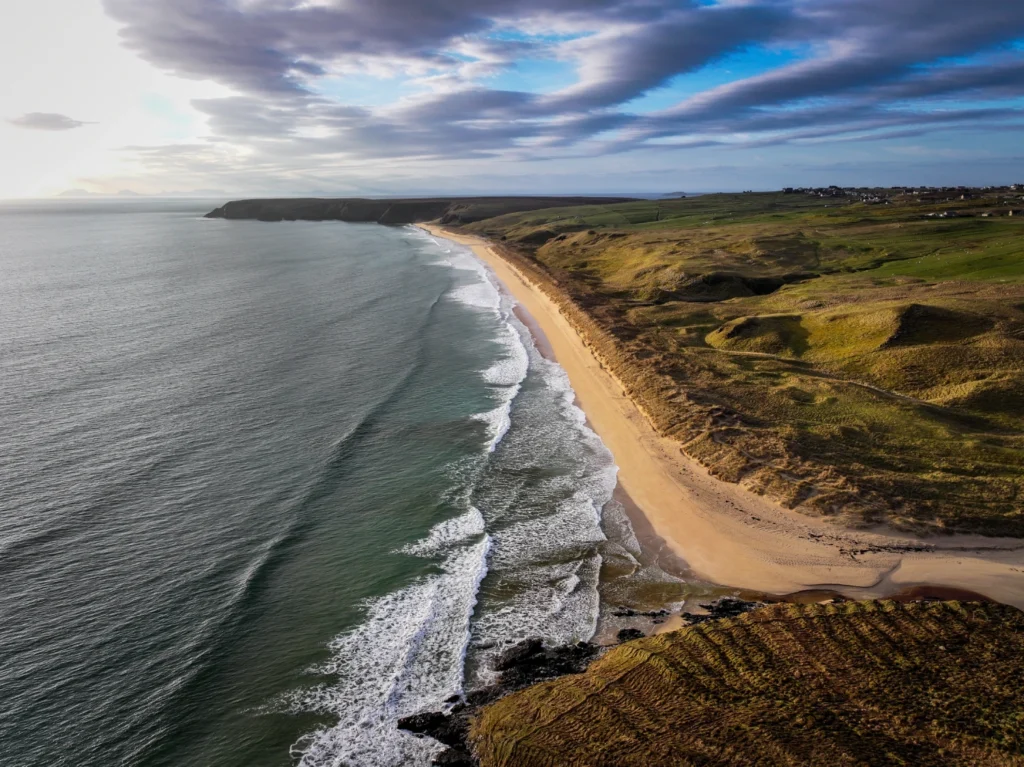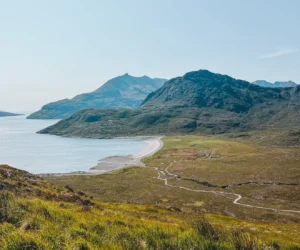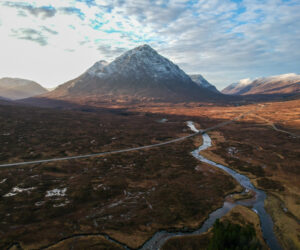The Isle of Skye in Autumn: Haunting Hidden Gems
Forget the summer crowds and the beautiful, sun-drenched Instagram shots. As the days shorten and a crisp, ancient chill whispers across the landscape, the Isle of Skye truly comes alive. Autumn, with its dramatic skies and fiery hues, presents a unique opportunity to explore the island’s lesser-known hidden gems and immerse yourself in the rich tapestry of its myths, legends, and eerie superstitions.
It’s the perfect setup for a campervan road trip – forget ghost stories by pitiful campfires, since you’re snug in your home on wheels, safe from snows, storms and (hopefully) spectres! When you’re hunting local legends around every bend and behind every hill as the days grow short, your campervan is king.
Pack your warmest layers, your sense of adventure, and perhaps a lucky charm – your campervan is about to become your time-travelling portal to Scotland’s spooky secrets.
Let’s go.

Table of Contents
Planning Your Trip
We use the below booking platforms to plan our trips. We hope you find them useful too!
The Isle of Skye: Why Use a Campervan?
Later in the year, the island roads are quieter, the air is bracing, and the best of Skye’s sites are all yours – why would you paralyse that heightened sense of freedom with a far-off basecamp and rigid check-in times?
Your campervan (depending on the model) is equipped with all of the amenities you need to ensure your autumnal island road trip runs smoothly and without fuss. Choose your spot for the night (adhering to local guidelines, of course!), whether it be by beach, road, or mountain. Read ghost stories by lamplight, jump into bed, and awake to a morning swim that is only seconds from your front door (or maybe just a nice breakfast!)
Flexible, reliable and comfortable – a campervan is the only local legend you’ll need this season!

More Adventures on Skye!
The Gruesome Ghost of the Cuillin Hills
While the Black Cuillin mountains are known for their rugged charm, in autumn, a different kind of beauty descends. The mists cling to the jagged peaks, and the wind blows low through the purple and gold of the glens.
Instead of focusing solely on the physical challenge of scaling these mighty crags, let’s look at the history woven into these mighty stones. For experienced hikers, Sgùrr a’ Ghreadaidh (“The Peak of Torment”) isn’t just an awe-inspiring hike; it’s a place where the veil between worlds wears thin.
Legend says that the jagged silhouette of the Cuillin range was a result of battling giants, while others claim that Beira, the infamous Goddess of Winter, angered the Sun, and in retaliation, he unleashed his wrath upon her land – the molten destruction gave way to the jaw-dropping scenery we see today.
However, a more frightening figure haunts those hills – locals claim the ghost of a murderous outlaw called MacRaing roams the ridges, wild-eyed and woeful, forever cursed for the heinous crimes he committed in life. In the still autumn air, the silence of the mountains amplifies such tales, transforming a challenging climb into a brush with Skye’s mystical past.
If scaling mist-wreathed peaks isn’t your vibe this year, you may prefer the tranquil Fairy Pools of Glen Brittle that lie beneath the Cuillin hills – they’re steeped in their own superstitions, such as shape-shifting selkies, but certainly sound less ghastly!
The Weird, Wild Waters of Waternish
As we venture further into Skye’s hidden corners, the Waternish Peninsula offers a truly authentic, off-the-beaten-path experience, especially later in the year.
This less-visited area, steeped in local legends such as the Fairy Flag of Dunvegan Castle, makes it perfect for the Halloween season. The isolation of Waternish in the quieter months makes it easy to feel the history in the air, and perhaps even spot a lone croft silhouetted against a dramatic sunset – a perfect setting for a ghost story.
Finally, while Neist Point Lighthouse is popular, visiting in late autumn, particularly at dusk, offers a vastly different experience. Hike out there and gaze across the waters of the Minch towards the Outer Hebrides – beneath the waves, the Blue Men are said to watch and wait for sailors. These sea-fairies are cunning and treacherous, and enjoy playing rhyming games with seafarers – if the latter answers wrong, however, they’ll find themselves hauled overboard or have their vessel smashed by a storm magically wrought by the grinning Blue Men.
We’ll stick to the trusty trails along the clifftops, thanks!

The Lore of Loch Coruisk
While the boat trip to Loch Coruisk (“Cauldron of Waters”) is a year-round marvel, in the autumn it takes on a more ethereal quality.
The loch, nestled amidst the formidable Black Cuillin, is said to be named for the cauldron of the Cailleach (also known as Beira, the Goddess of Winter), which she uses to craft her great storms. This ancient place has always been noted as having an air of gloom (if not downright dread), so it’s no surprise to us that the local lore marks it as the workshop of a widely-feared deity!
However, you should watch the waters even if the skies are clear – the loch is said to be home to a malevolent kelpie, a shapeshifting water spirit. Kelpies traditionally take on the form of a beautiful horse, but once you’ve gotten close, it drags you beneath the surface to drown.
The Kelpie of Coruisk is well-regarded as a particularly powerful monster, and unlike others of its kind, it is said to sometimes take the form of a sorrowful dark-haired man to lure in its prey.
We highly recommend avoiding the company of any such strangers during your day trip, regardless of how tasty their loch-side picnic looks!

More Like This . . .
Revenge on Raasay
Just a short ferry hop from Skye, the Isle of Raasay often plays second fiddle, but its autumnal charm and hidden histories are profound!
One hidden gem is Brochel Castle, a striking and often-overlooked ruin perched precariously on a rocky outcrop. Unlike the grander castles of the mainland, Brochel’s rugged isolation speaks volumes about the tumultuous factions of Skye’s history. It was once a stronghold of the MacLeods of Raasay, one of whose clan was a legendary battler of the dark arts.
MacGillichallum of Raasay’s staunch opposition to dark magic soon earned him the ire of Scotland’s witches, who eventually banded together to ensure his demise. After a successful hunting trip on Lewis, the mighty MacGillichallum found himself ambushed by a storm on his return passage – his crew had been chastised by a “local old woman” for avoiding the day’s bad weather, and had set sail out of shame.
In sight of the harbour, the crew were amazed they had survived, until they saw mysterious black cats appearing in the rigging above, one by one, until they could barely see the sky. MacGillichallum knew it was witchcraft, but it was too late – the feline horde attacked and quickly capsized the boat, sending the folk-hero and his men to the depths.
Don’t worry, though – no stray cats allowed on the ferry!
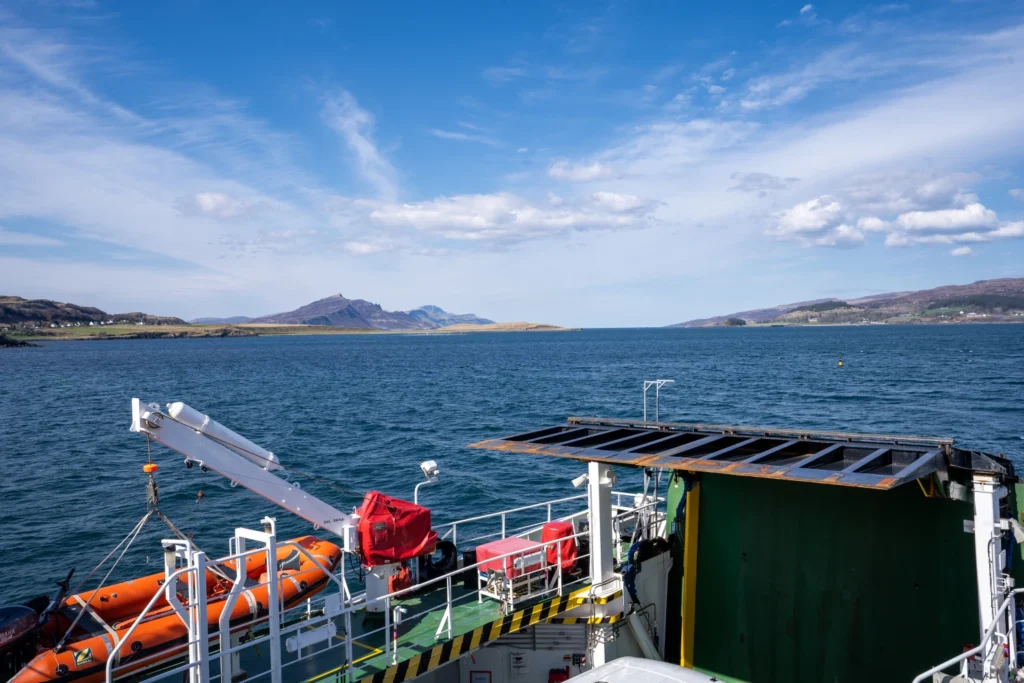
In Need of a Trusty Steed?
The Dungeons of Duntulm
Perched on Skye’s northern cliffs, the ruins of Duntulm Castle are the last remnant of the various rugged redoubts that have squatted here over the millennia.
This sea-sprayed stronghold has borne witness to its fair share of Scottish history, but is most well known for being inhabited by two of Skye’s warring rival clans at different times – the MacLeods, and the MacDonalds of Sleat.
It is the latter clan who can lay claim to lion’s share of phantoms that are said to roam the ruins. Hugh MacDonald, a usurper of the rightful chief, was locked in the dungeons as punishment with limited supplies – visitors claim his ghostly moans from below ground can still be heard. The chief himself, reputedly a bold fellow, apparently still roams the ruins in his own spectral form, looking for a brawl!
The MacDonald chiefs later relocated, and it’s said the reason why was not to consolidate wealth or power, but due to a great tragedy: the story goes that a MacDonald heir was accidentally dropped by his nursemaid from a castle window, falling to the surf-slick rocks below. The maid was executed, but her weeping can still be heard as her spirit wanders the halls of her master’s home, begging for forgiveness.
In autumn, park up nearby and wander the coastline, filling your lungs with fresh, salty air as you marvel at the stories, the tragedies, and the sheer number of ghosties that this mighty citadel can lay claim to.
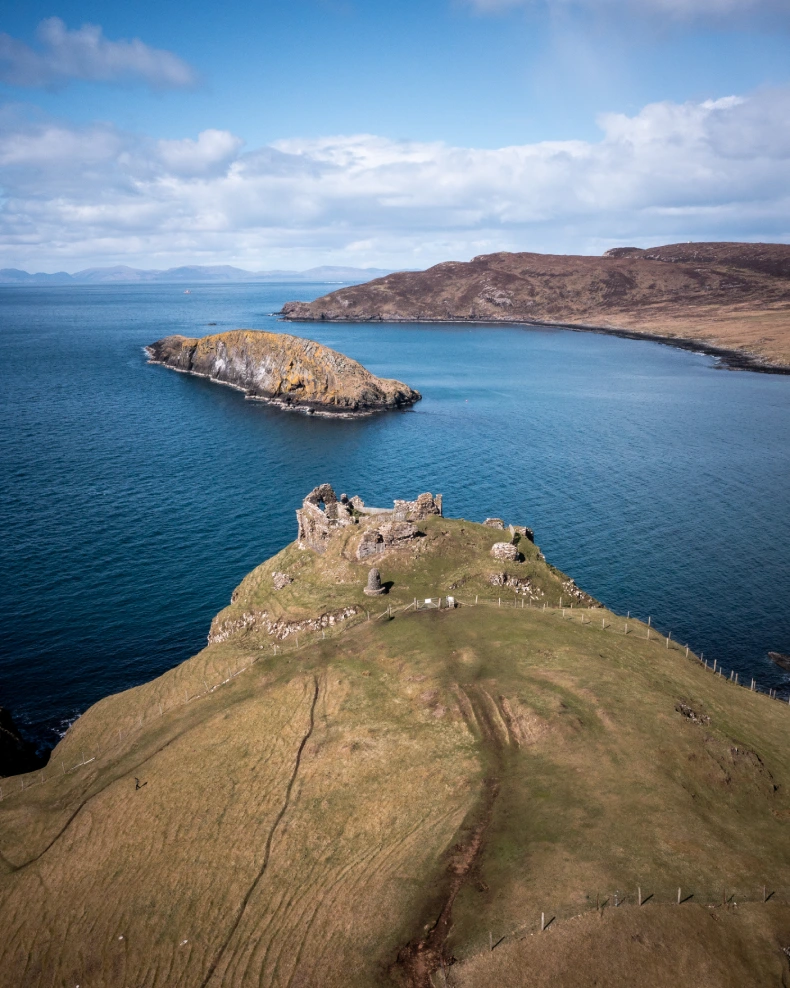
Skye’s Hidden Gems: Hallowed Ground
Skye by campervan in autumn is more than just a holiday; it’s an archaeological dig into the island’s soul. It’s about swapping packed car parks for peaceful solitude, and well-trodden paths for hidden trails that whisper tales of old.
The cooler temperatures, the dramatic light, and the absence of peak-season bustle create an atmosphere ideally suited to exploring the myths, legends, and forgotten histories that define this magical island. As the nights grow longer and Samhain (Halloween) comes and goes, embrace the authentic, sometimes eerie, beauty of Skye.
Your campervan offers the freedom to chase the golden light by day and huddle in your cosy haven by night, perhaps reading a local legend by lamplight, while outside, the ancient spirits of Skye prepare for their annual awakening. However, if things get too spooky for you, there are plenty of pubs in Portree to hide in!
This autumn, let Skye’s spectral stories and spooky secrets capture your heart – and maybe even send a shiver down your spine.
Happy Haunting!
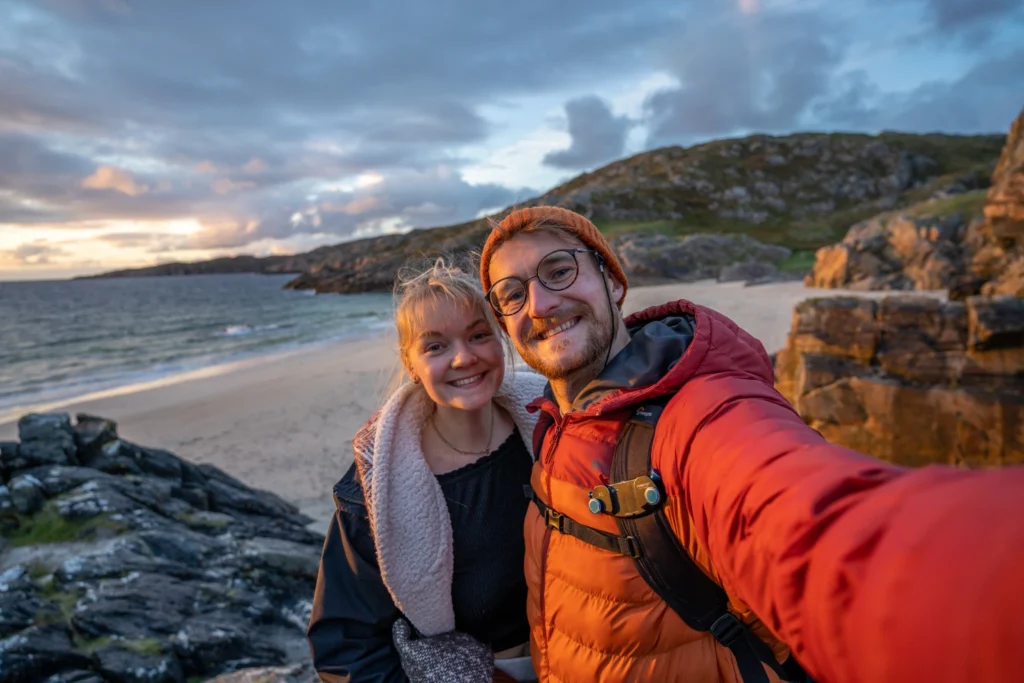
Useful Links
- Isle of Skye – for local info!
- CalMac Ferries – book well in advance!
- Met Office – check the weather!
- Traffic Scotland – for route changes and updates.
- WalkHighlands – the best hiking trails and tips.
- Highlands2Hammocks (That’s us!) – for our online shop, other blogs, and brand-new campervan rental service.



